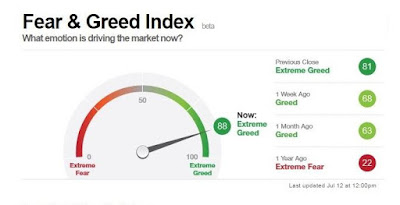
Understanding the Fear and Greed Index
Some skeptics dismiss the index as a sound investment tool as it
encourages a market timing strategy rather than a buy and hold strategy.
While it's true that most investors should avoid trying to time the
market to score short term gains, the index may be helpful in deciding
when to enter the market.2 To do that, you’ll want to consider timing your investment entry point when the index tips toward fear.
Behavioral Finance and the Fear and Greed Index
While the Fear and Greed Index might sound like a fun investment
metric, there’s a strong case to be made for its merit. Consider, for
example, the fascinating—and perhaps wacky—research that has gone into
the foundations of a related field known as behavioral finance.
For example, some scientists have studied how often rats press a bar in
hopes of getting a reward as a measure of human fear and greed.
The real turning point for behavioral finance came in 1979, when
psychologists Daniel Kahneman and Amos Tversky developed “prospect
theory,” which explains how the same person can be both risk averse and
risk taking, depending on whether a decision seems more likely to lead
to a gain or a loss.4
Since we generally prefer to avoid a loss (we're "loss averse"), we
will accept more risk to avoid a loss then we will to realize a gain.
This behavior predominates when the Fear and Greed Index tilts toward
fear.